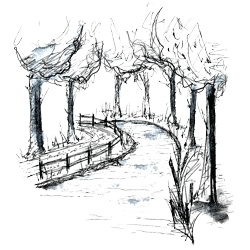
Secret Suffolk – What’s the deal with Shingle Street?
Now you may have never heard about Shingle Street, and you’re probably wondering what on earth it is. Well, you’ve come to the right spot if you want to know more about what it is and why it has a special place in Suffolk history.
Shingle Street is a coastal settlement in Suffolk about 8 miles north of Felixstowe, facing the North Sea. Today, there are about a dozen buildings in the settlement.
So, what is so important about some buildings lining a dead-end street on the North Sea coast?
It all started in World War II when multiple conspiracy theories arose about the place. These include conspiracies around a German landing on the village, the shoreline seeing burning bodies washed up, various chemical bombs testing, the North Sea being set ablaze, German troops washing up on the beaches, and even a firefight with German soldiers who were part of an invasion attempt.
So, did any of this stuff actually happen?
Well, today, what we know is that there were four German airmen who washed up onto the beach, although different sources have stated that they were washed up elsewhere. We also do know that weapons testing led to the Lifeboat Inn being blown up. But why are there so many theories?
The village was evacuated around the middle of 1940 due to the anticipation that there would be a German invasion, and it was thought that the Germans were looking at Shingle Street for their spot to invade England, so there ended up being no real eyewitness accounts to go from.
The village remained uninhabitable until the late 1940s because three years after the evacuation, the town was used for munitions testing. After having to go back and clear the mines that were left on the beach, people started to slowly return to Shingle Street.
So what actually happened at Shingle Street during the years of the Second World War?
Well, it wasn’t found out until 1992, when a series of top secret documents managed to be declassified and the truth was found out about what actually happened. Although, originally, the expiry date for the documents was set for 2021. What else could have been circulated if they weren’t released in 1992?

These documents explain that more than 20 homes at Shingle Street were needed to be requisitioned by the military, that mines were going to be laid on the beach, and the area would be used for bombing test runs. But what wasn’t included in the documents was anything about a defeated Nazi invasion or soldiers appearing on the beach after the sea caught fire.
An historian named James Hayward concluded the above, and added further onto the idea. He stated that there is no evidence for a German landing attempt onto the beach. As well as that, he ventured further into the ‘setting fire to the sea business’. He detailed Britain’s initial military experiments around the ‘setting fire to the sea business’, but concluded it took place in Orford (which is about 6 miles up the coast) and in 1914 – during WW1 and a few weeks before Christmas.
Some sources, such as one of the more popularly held ones, believe it to be a propaganda stunt – an idea manufactured by the head of propaganda for Britain. The BBC East Inside Out Team, who did research into the Shingle Street incident, suggested that a former Daily Express Journalist called Sefton Delmer organised Britain’s ‘black’ propaganda unit, might have spread rumours about the failed Nazi invasion to boost the morale of the British public during the indescribably hard times of World War 2.
So, what’s at Shingle Street today?
At Shingle Street today, you will find a Martello Tower, which are small defensive forts that were built to protect England from an invasion during the Napoleonic Wars, preserved WW2 pillbox defences, and a single row of cottages looking out over the North Sea. Oh, and the shingle break at Shingle Street.
Whilst this may not immediately have you thinking of renting a Barn or Barge in Suffolk, it remains a testament to the rich historic significance of our county. And this is just one of the many reasons we think it’s so deserving of a visit.












